In modern football, the role of the defensive midfielder has evolved into one of the most tactically pivotal positions on the pitch.
Whether protecting the backline, orchestrating attacks, or helping their team advance, defensive midfielders encompass a range of archetypes, each bringing a unique style of play.
This tactical analysis delves into the different archetypes of defensive midfielders, highlighting their distinct roles and how they operate within various tactical systems.
We’ll also use statistics and player radar charts to provide deeper insights into their contributions on the pitch.
From the combative “Destroyers,” like Aurélien Tchouaméni, who excel at winning duels and breaking up attacks, to the intelligent “Anchors,” such as Rodri, who dictate the tempo and manage the game’s flow, and the tireless “Space-Eaters,” like Declan Rice, who use their athleticism to cover ground and aid in transitions, ensuring balance in both defence and attack.
By examining these archetypes through this scout report, we can better understand which types of players fit into what tactics and systems, and what makes them thrive as elite midfielders today.
Types of Midfielders
The three types of midfield profiles we’ve decided to focus on are the “Destroyer,” the “Anchor,” and the “Space-Eater.”
When analyzing midfielders, it’s crucial to recognize that players can often overlap between two profiles or even embody elements of all three.
The best-holding midfielders in history typically possess two of these archetypes, as it is very rare for someone to embody all three.
“Destroyer” midfielders are the most traditional archetype, dating back to the early days of the game, where teams sought players who were duel-winners—fearless, aggressive, and capable of winning the ball back.
From the early 2000s to now, teams have adapted by incorporating an “Anchor” into their system to better progress the build-up phase.
With more tactical evolution in modern football, teams now look for “Space-Eaters”—athletic players who excel at zonal marking out of possession, often paired with another archetype to provide balance.
On a broader scale, defensive midfielders can be classified into two sections: those who are good in possession and those effective out of possession.
For instance, teams like Manchester City, who dominate possession, use an “Anchor” archetype like Rodri.
To balance him out, they pair him with a defensive midfielder who excels out of possession, such as Kovacic, Akanji or John Stones. Looking at a team with a “Destroyer,” think of Real Madrid from 2015 to 2021, where Casemiro started week in and week out.
To complement him, Madrid used Toni Kroos as the “Anchor” and Luka Modric, who could also function as a “Space-Eater.”
This created the perfect midfield balance required for their success.
Destroyer Midfielders
Destroyers are ball-winners who guard the backline, often confused with space-eaters due to some similarities.
They have less mobility than space-eaters and excel purely at regaining possession. They are often paired with quarterbacks, while space-eaters are typically paired with anchors.
These are your Casemiros, Manuel Ugarte, Aurélien Tchouaméni—players who can provide defensive coverage and win the ball back in duels before the opposition moves into their attacking phase.
These are players that cover short distances out of possession, you can task with man-marking key players on the opposing team and expect them to shut that player down.
Anchor Midfielders
These midfielders provide crucial tactical support by defining the pace and tempo of the game, not only through short passes but also with precise long-range distribution when needed.
Their deep understanding of the game allows them to dictate play, controlling how both their team and the opposition move.
Whether it’s maintaining possession or launching attacks, they are pivotal in shaping the team’s overall strategy.
Players like Busquets, Rodri, Kroos, and Pirlo excel in this role, acting as the central hub through which their team builds play and manages the match from deep positions.
Space Eater Midfielders
Shuttlers are a rare profile of defensive midfielders with incredible athleticism and ball-winning ability, often referred to as “Space Eaters.”
They cover vast ground and are a valuable asset to the team during transitions, making them highly sought after by elite teams.
These players excel at zonal marking and can take on box-to-box roles.
These are your Rices, Onanas, and Kantés—players capable of covering long distances out of possession.
Rodri Scouting Report
Looking at Rodri’s radar map, it’s clear that he embodies the “Anchor” archetype, playing a pivotal role in every phase of the pitch due to his exceptional passing abilities.
He ranks highly across passing metrics, even reaching the 94th percentile for goal contributions as a defensive midfielder.
However, his defensive duels are where he falls short, preventing him from being the complete midfielder who ticks all archetype boxes.
Later in this analysis, we will discuss how Manchester City accommodates this aspect of his game.
Rodri Radar Map At Manchester City
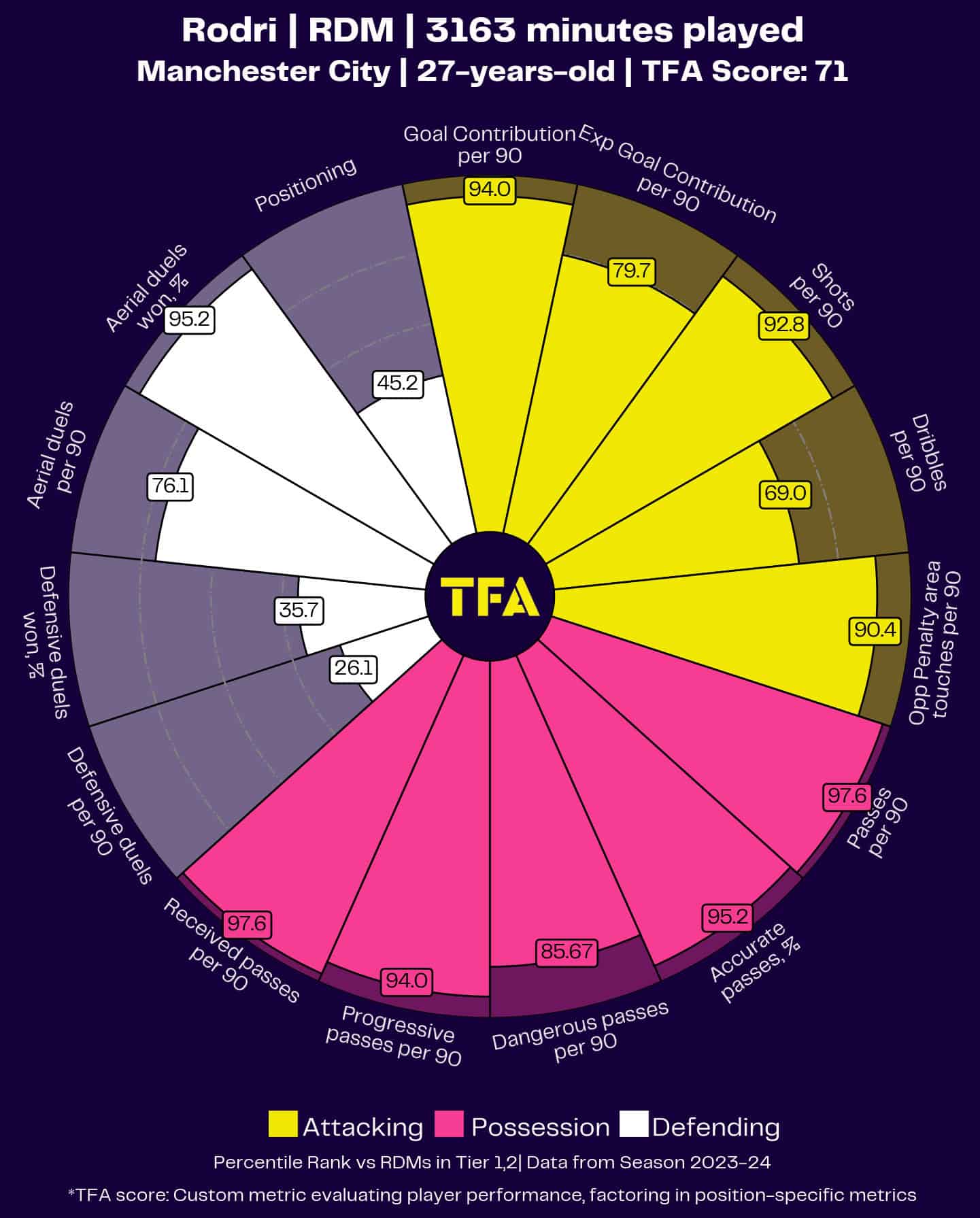
For reference, take a look at Rodri’s progressive pass map—not just his regular pass map, but his progressive one.
When analyzing many players’ progressive pass maps, you may notice an overload of passes on one side of the pitch, where they feel most comfortable.
However, Rodri’s progressive passing covers the entire pitch, showing no weaknesses when it comes to playing forward.
His ability to consistently move the ball into advanced areas from all over the field highlights his mastery of the “Anchor” role.
Rodri Progressive Passes Map
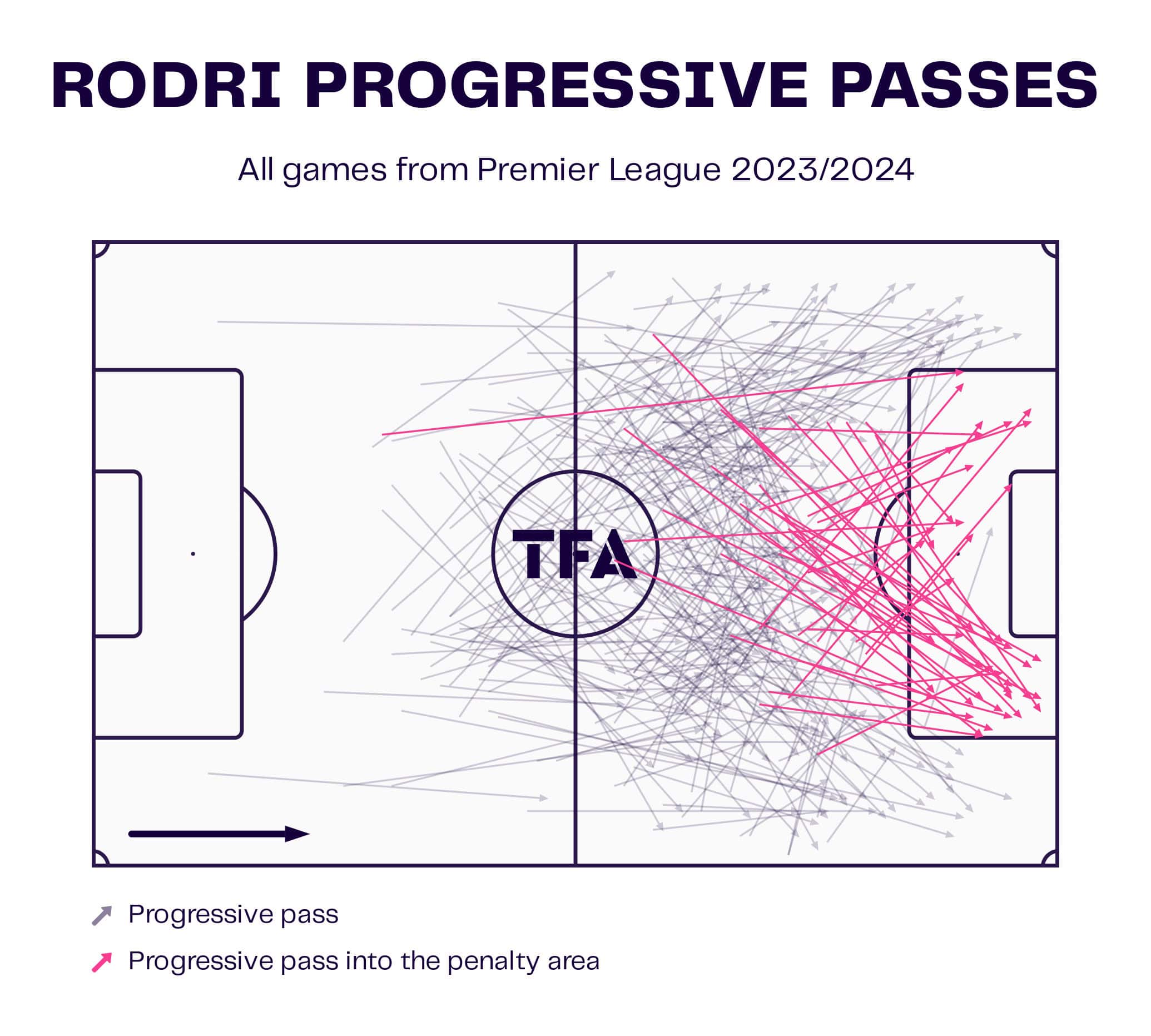
Rodri’s defensive territory map provides insight into which zones of the pitch he is most active. Interestingly, a significant portion of his defensive actions occur higher up the field rather than deep in his own half.
This is because Manchester City often deploy another defensive player to cover the deeper areas, allowing Rodri to push forward and engage in more aggressive actions.
This setup gives him the freedom to adopt a “Destroyer” role without risking defensive vulnerabilities.
Rodri Defensive Territory Map
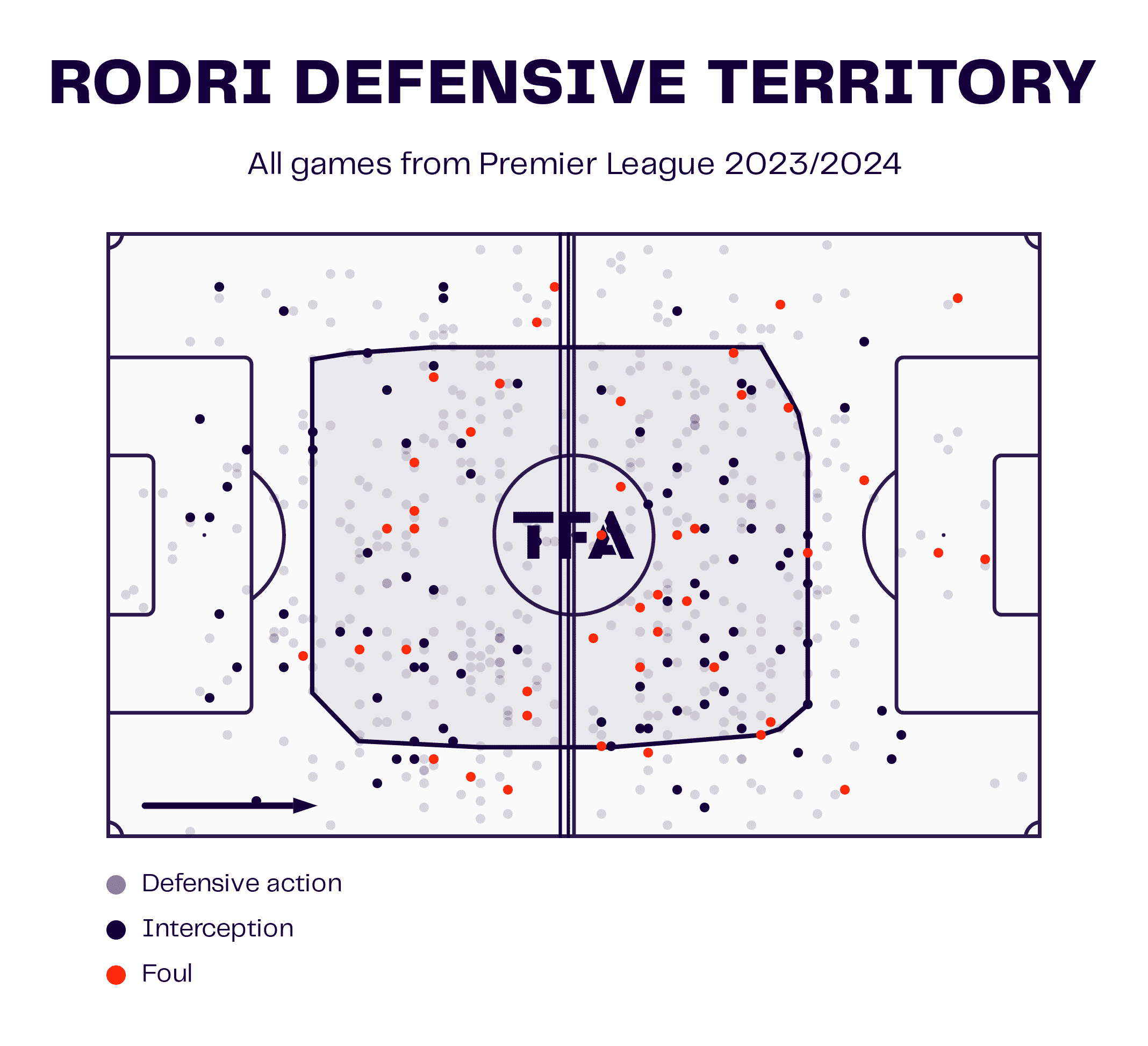
When analyzing Manchester City’s most recent match, we can see how Rodri fits seamlessly into Pep Guardiola’s system and how the manager accommodates for the areas Rodri cannot cover.
By leveraging Rodri’s strengths in the “Anchor” archetype, Guardiola ensures the team gets the most out of his abilities, while other players compensate for his limitations.
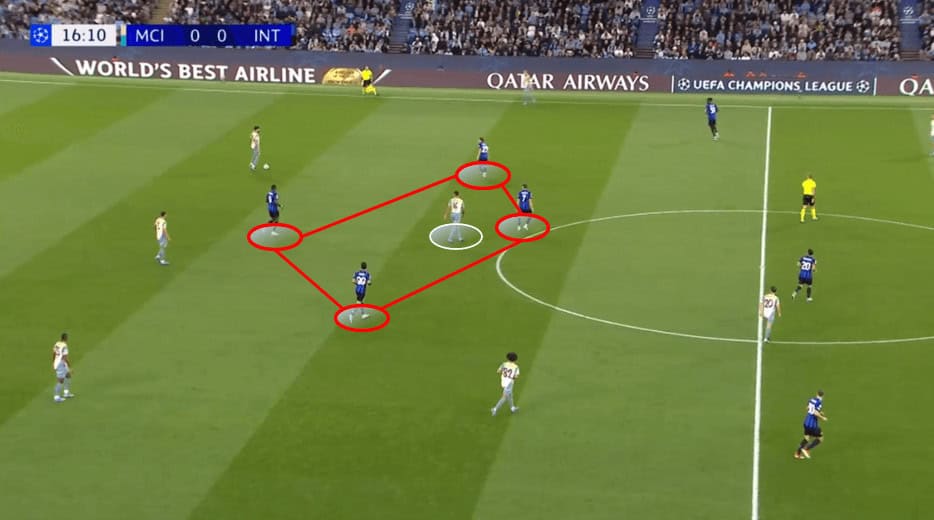
In possession, Rodri is more than capable of playing as a single pivot.
Opposing teams often try to create their first defensive line to overload the center, specifically aiming to prevent him from receiving the ball and progressing Manchester City forward.
However, Rodri excels in his “Anchor” role, making him the focal point of the team’s build-up and ball progression.
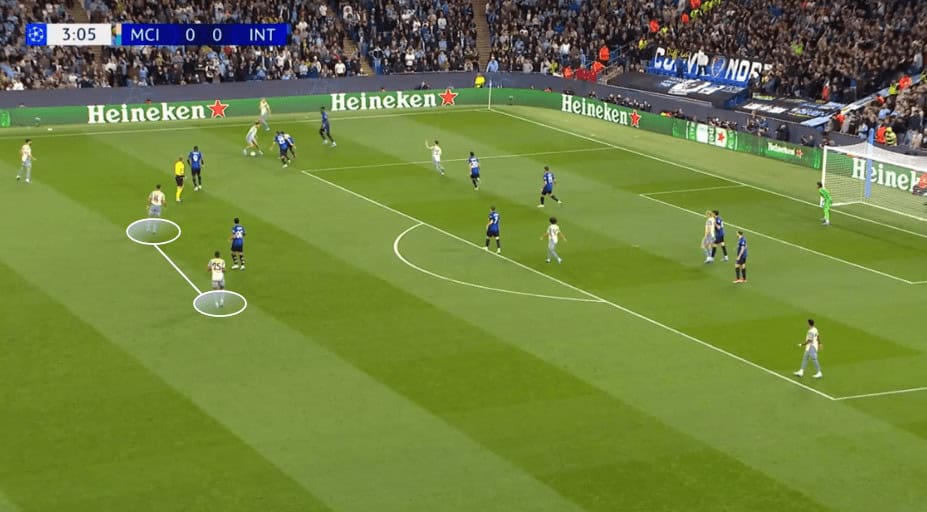
Where Rodri requires support is in the defensive side of his game. While he is an excellent defensive midfielder due to his spatial awareness and positioning, he lacks the combative traits of a true “Destroyer.”
To address this, Manchester City often deploy an inverted center-back into midfield to compensate for Rodri’s defensive limitations, providing extra coverage to protect against counter-attacks.
This additional man also creates another passing option for Rodri, who excels at finding open teammates in these situations.
What makes Rodri the best defensive midfielder in the world is his “Anchor” characteristics—a player who is involved in every phase of play thanks to his exceptional passing abilities.
While he possesses the physical frame of a defensive midfielder, he lacks the ruthless aggression that defines standout “Destroyers.”
However, his intelligence in positioning places him in the “Space-Eater” archetype, excelling in zonal marking and positioning despite not being the most athletic player.
Aurélien Tchouaméni Scouting Report
Aurélien Tchouaméni is one of the purest “Destroyers” in modern football, and this is a key reason why Real Madrid remained unbeaten in 27 consecutive matches across all competitions when the Frenchman started.
His defensive prowess even allowed him to step into the center-back role during an injury crisis, showcasing his versatility.
Looking at his radar chart, you’ll also notice his impressive passing ability within the Real Madrid system, highlighting an overlap between the “Destroyer” and “Anchor” archetypes.
It’s important to note the distinction between a “Destroyer” and a “Space-Eater.” A “Destroyer” thrives in short distances, able to close down small gaps quickly and win the ball.
However, over longer distances, his effectiveness isn’t as pronounced… yet.
Aurélien Tchouaméni Radar Map At Real Madrid
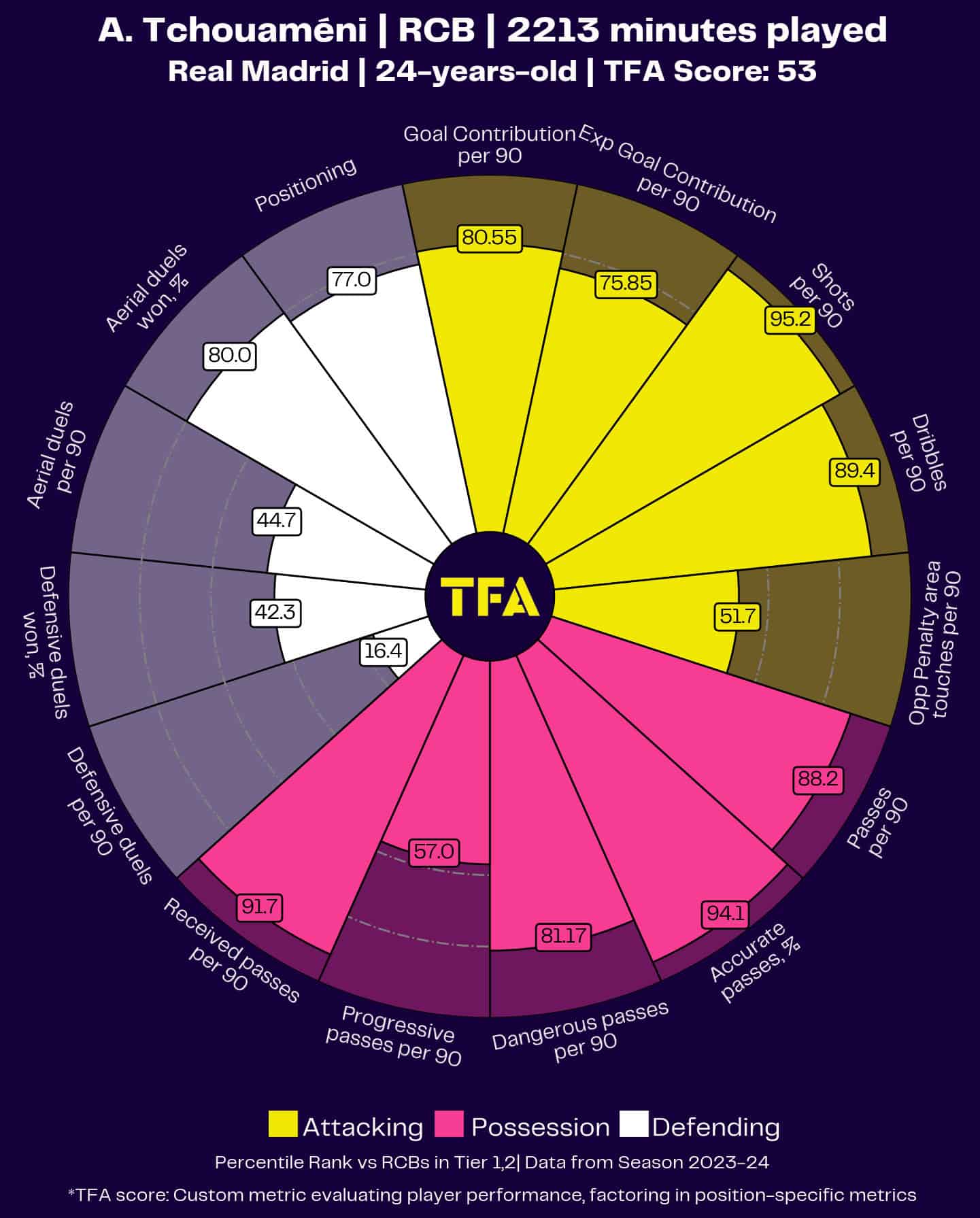
Notice how Tchouaméni’s defensive territory map is more aligned with the center-back area compared to Rodri’s, which is primarily due to his versatility in playing as a center-back during rotations.
Additionally, Tchouaméni often drops into the backline when needed, allowing Real Madrid to form a back five.
This adaptability adds an extra layer of defensive solidity and shows his ability to seamlessly transition between roles.
Aurélien Tchouaméni Defensive Territory
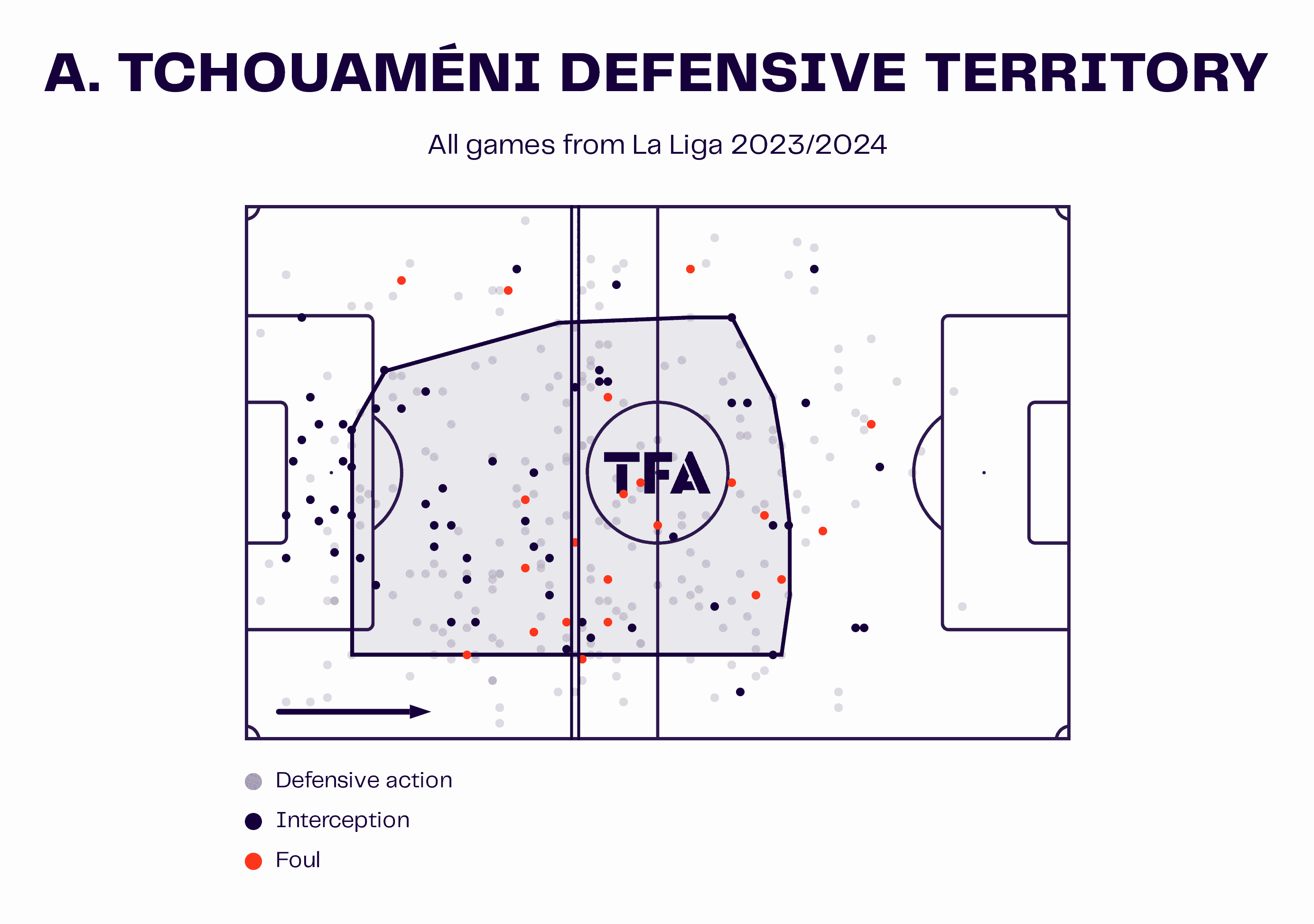
Tchouaméni is rightfully aggressive, with excellent anticipation.
He’s always ready to pounce and get in front of shots, putting his physical frame on the line to shut down opportunities, as evidenced by his shots-blocked statistics.
Aurélien Tchouaméni Shots Blocked Map
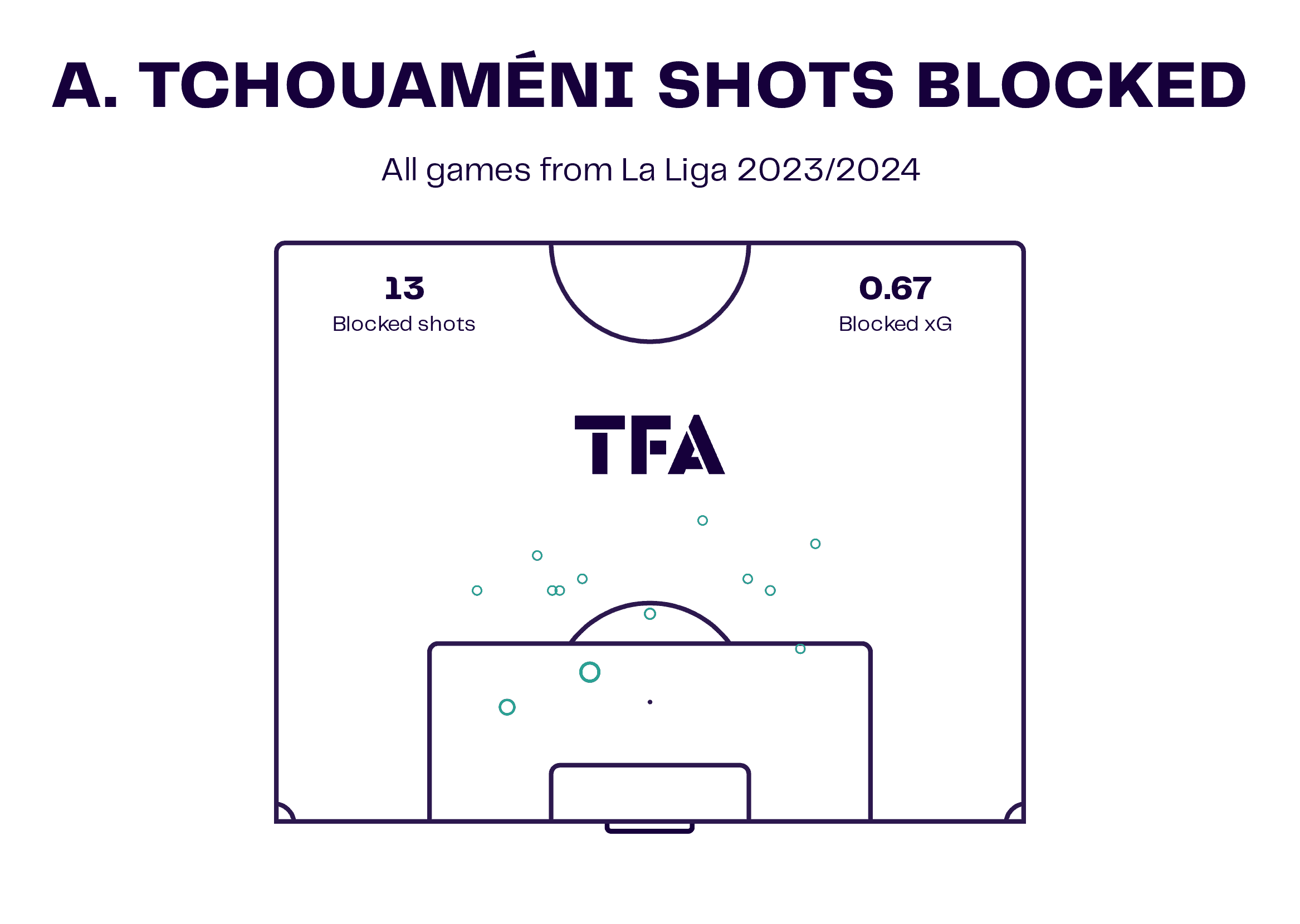
Tchouaméni’s ability to cover short distances so effectively is why he is pivotal to this Real Madrid team.
His presence allows Madrid to commit more players forward during the press, relying on him to control the space in behind.
The two images below perfectly illustrate how Madrid tailors their system to maximize his strengths and best attributes.
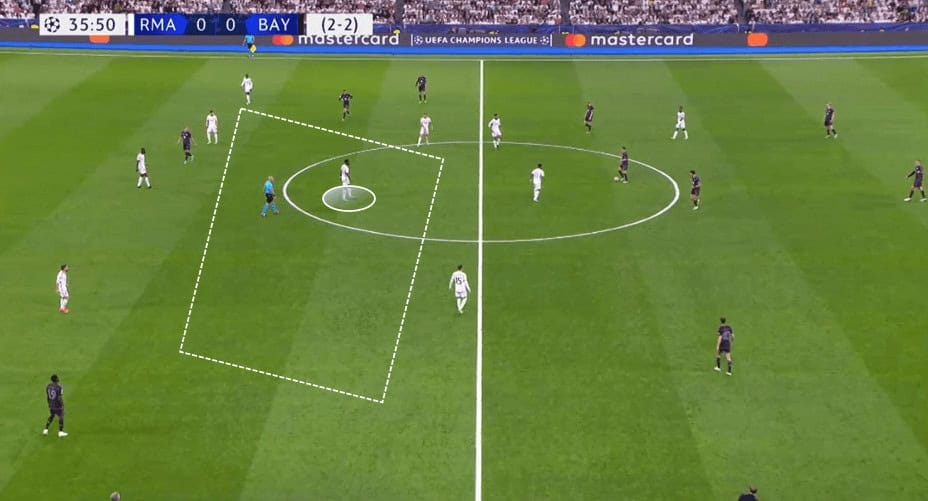
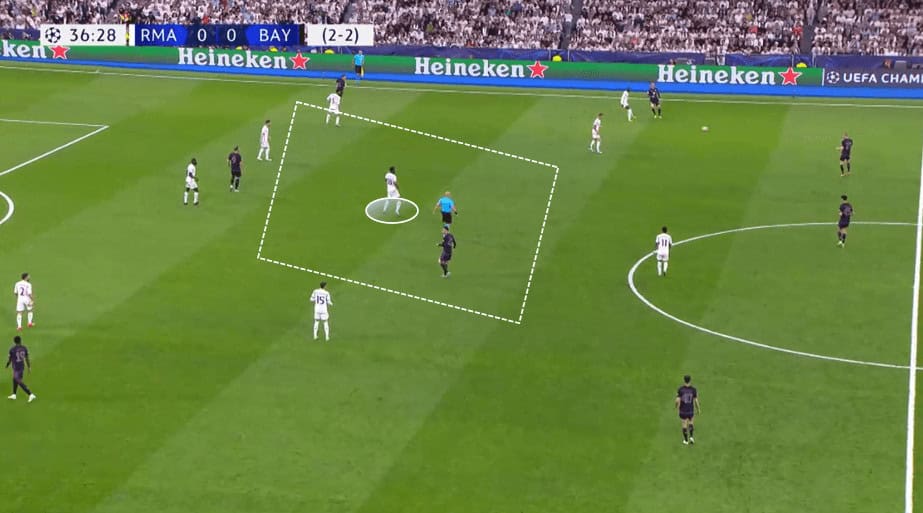
This image below highlights Tchouaméni’s aggressiveness in action. Recall how we mentioned earlier that he can slot into a center-back role to create a back five.
He’s often positioned just a yard in front of the backline when he shifts into that area, always ready to step out and shut down opportunities over short distances.
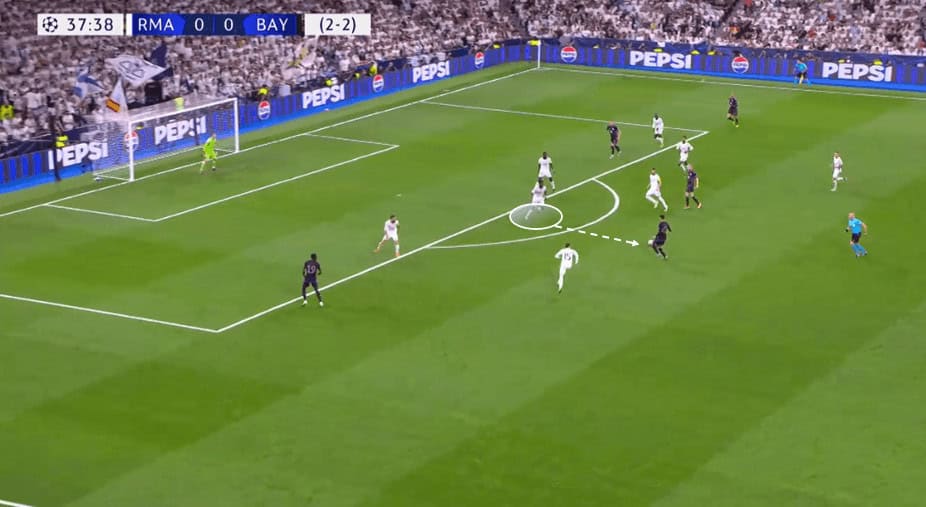
You can have a lone “6” as a Destroyer out of possession, but in possession, it’s ideal to pair them with someone who has better passing capabilities.
This is why Real Madrid was one of the best teams in the world when Toni Kroos was still active alongside Tchouaméni.
Kroos would drop between the center-backs, playing as the “Anchor” or deep-lying playmaker, while Tchouaméni positioned himself to attract opposing midfielders.
In this example, you can see three Bayern players gravitating toward Tchouaméni’s space, even though the goal isn’t to give him the ball at this stage.
His positioning and passing intelligence are excellent, but for Destroyers like him, having another midfielder with superior passing nearby is crucial for the system to function effectively.

Declan Rice Scouting Report
Declan Rice is primarily a “Space-Eater” due to his excellent ability to cover long distances out of possession.
However, he also has the discipline to stay in position, qualifying him as a “Destroyer” as well.
A “Space-Eater” typically cannot operate as a lone 6 in a positional play system but can be highly effective as an 8.
If you want to deploy a “Space-Eater” in a defensive role, a double pivot is necessary, as they require an “Anchor” for deeper dictation.
This is why Arsenal prefer to play Thomas Partey alongside Rice, with Ødegaard in a more advanced role—similar to the midfield trio that Real Madrid once had.
However, Partey’s frequent injuries limit how often Rice can play alongside him.
When they do pair up, you see the best of Rice. Partey provides defensive coverage when Rice needs to cover long distances, freeing Rice from the responsibility of making attacking passes, a load Ødegaard can carry.
In this setup, Rice contributes like a box-to-box midfielder while still excelling defensively.
His defensive capabilities and athleticism make him ideal for a double pivot.
Declan Rice Radar Map At Arsenal
This balance is reflected in his radar chart, where his defensive traits are evident alongside some strong passing percentiles.
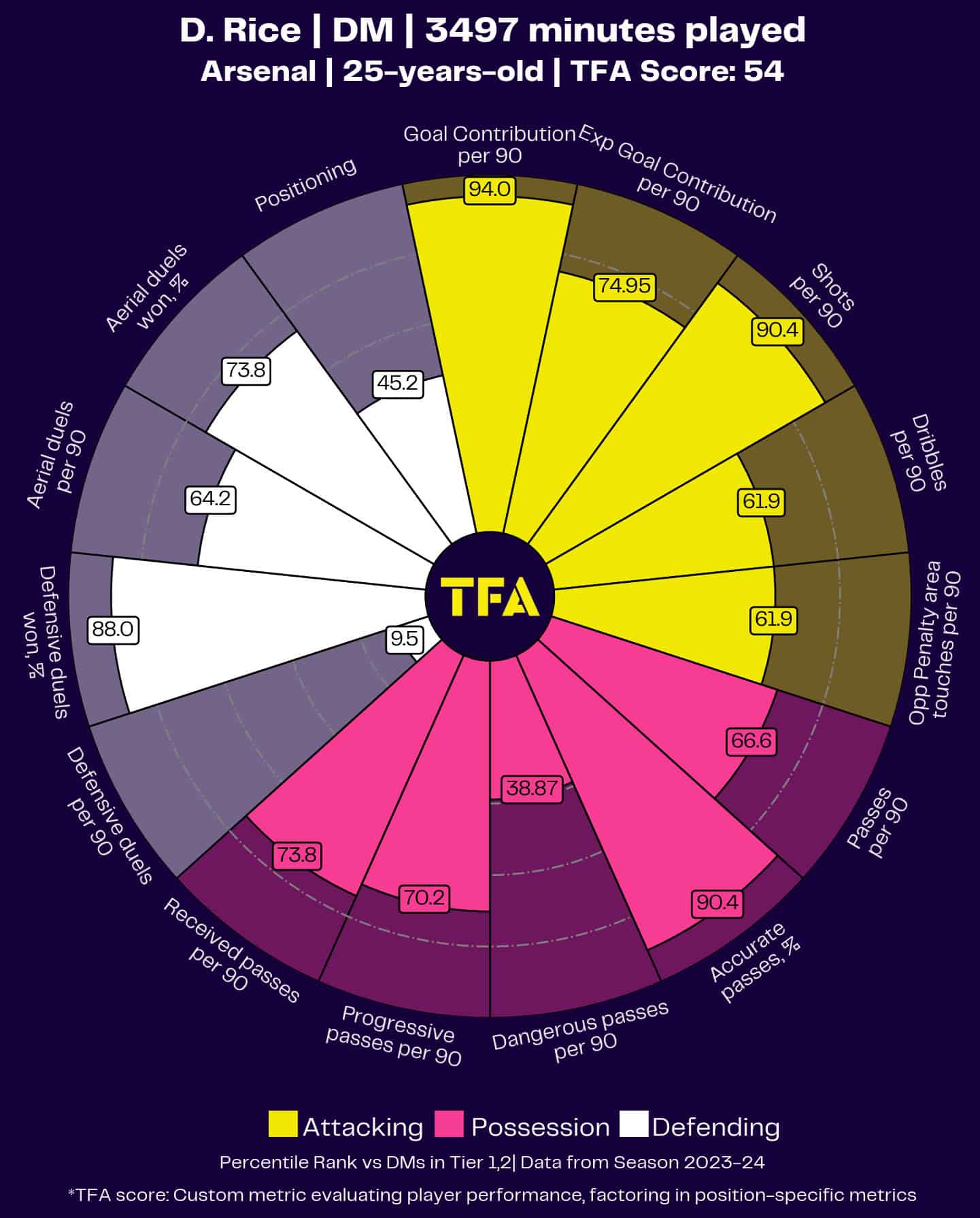
When looking at Rice’s heatmap, we can clearly see how much ground he covers, both vertically and horizontally, across the entire pitch.
His ability to cover such long distances without hesitation is enhanced by having a partner to provide defensive coverage, allowing him to roam freely and contribute across multiple areas of the field.
Declan Rice Heat Map

Rice’s ability to cover long distances is a key reason behind his high regain map.
He can push forward during the press and force turnovers, which is reflected in his impressive counter-pressing numbers—86 counter-presses and 60 high regains.
This aspect of his game is pivotal to Arsenal’s success, showcasing his importance in disrupting the opposition and regaining possession quickly.
Declan Rice High Regains Map
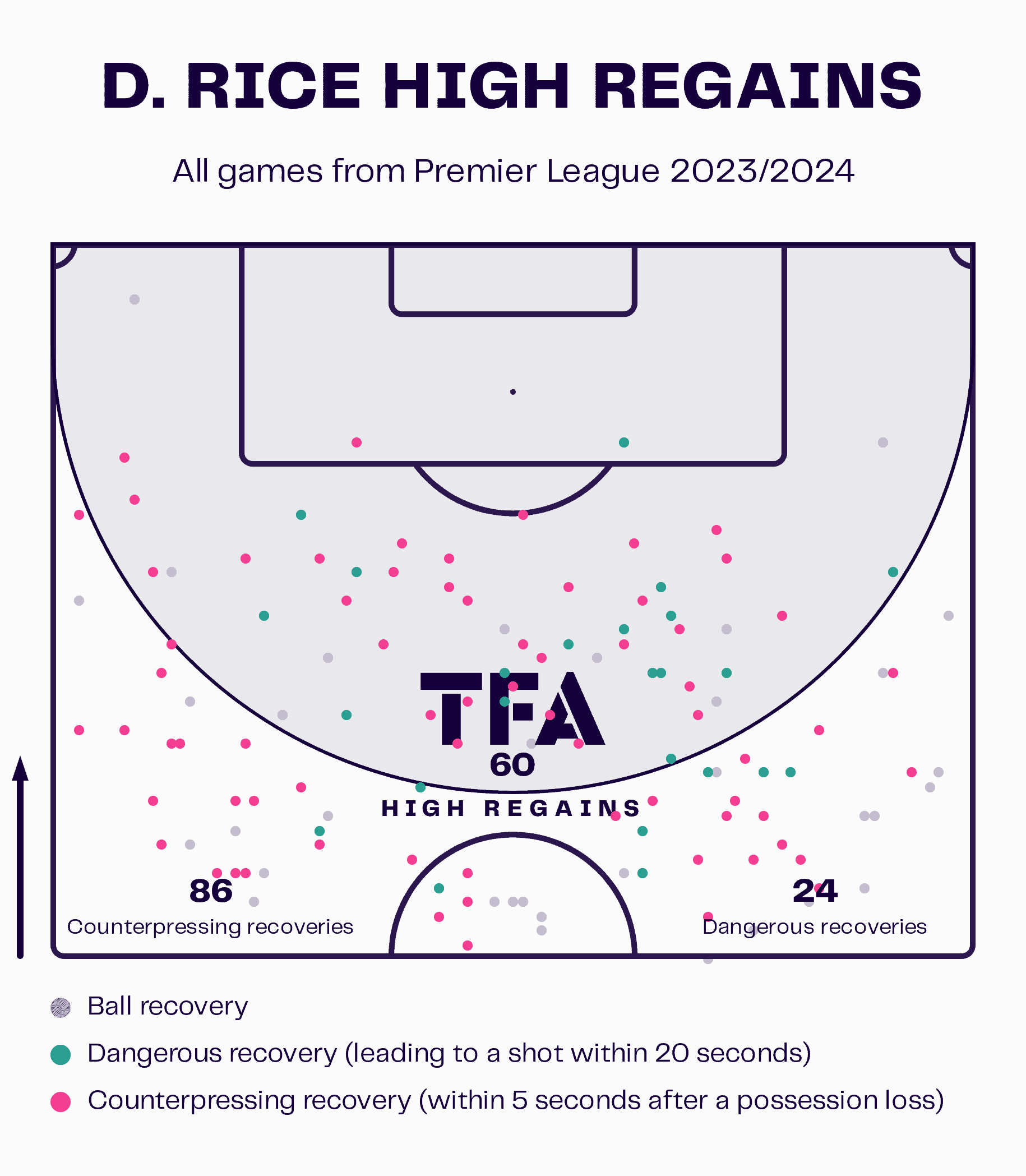
Rice is the perfect example of the “Space-Eater” archetype, able to push up into spaces typically occupied by a number 8, while still tracking back to resume his role in the double pivot as a 6.
Notice the distance between Rice and Partey—Rice is given the freedom to move forward, which explains the high regains in the opponent’s half, as seen in the data.
He operates as an attacking defender, disrupting the opposition high up the pitch. In the images below, you can clearly see the large gap between Partey and Rice.
This is because a “Space-Eater” can cover long distances efficiently, handling the open space behind them and tracking it down effectively.
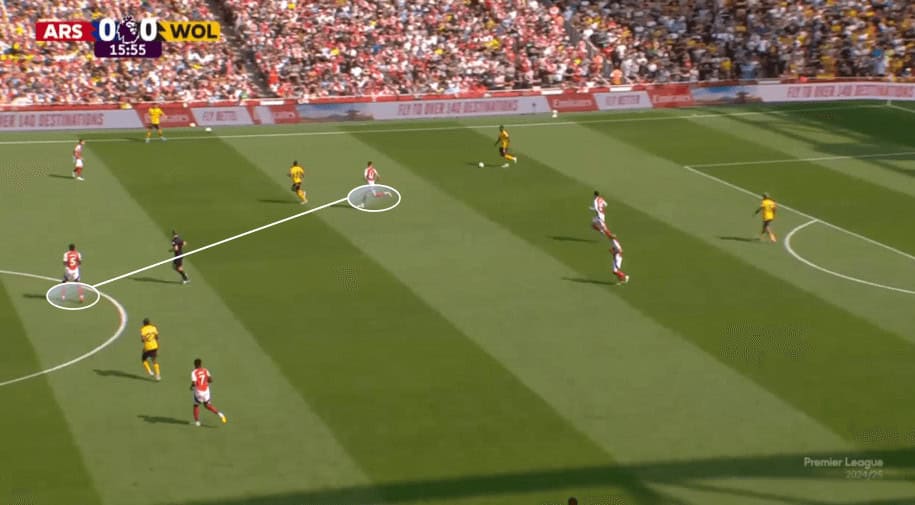

Rice is also entrusted with playing a more reserved 6 position, which allows him to slightly qualify as a “Destroyer” as well.
When Partey pushes higher up, Rice can step into the lone 6 role in front of the back four, providing an additional defensive layer.
This versatility makes him a crucial piece in Arsenal’s midfield setup, capable of adapting to both defensive and more advanced responsibilities.
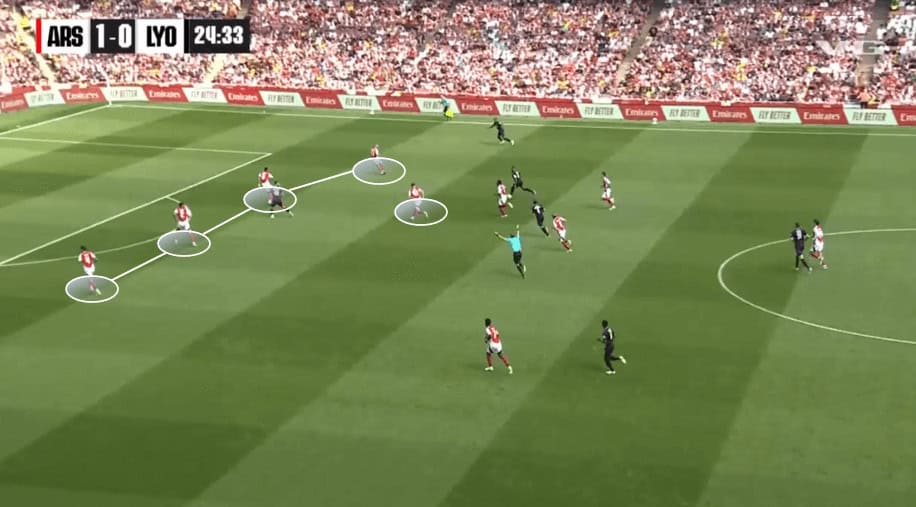
Conclusion
In conclusion, the modern defensive midfielder has evolved into a multi-faceted role, requiring a unique blend of intelligence, athleticism, and tactical awareness.
Players like Rodri, Tchouaméni, and Rice embody different archetypes, each excelling in their respective strengths.
Rodri stands out as the perfect “Anchor,” controlling the tempo and dictating play, while Tchouaméni excels as a “Destroyer,” offering defensive solidity and the ability to break up opposition attacks.
Rice, as a “Space-Eater,” covers vast ground and provides balance between defensive duties and forward play.
By understanding these archetypes, teams can build more balanced, effective midfield units that enhance both defensive and attacking strategies.
Each player’s strengths, when used in the right tactical system, can elevate a team’s overall performance and success.

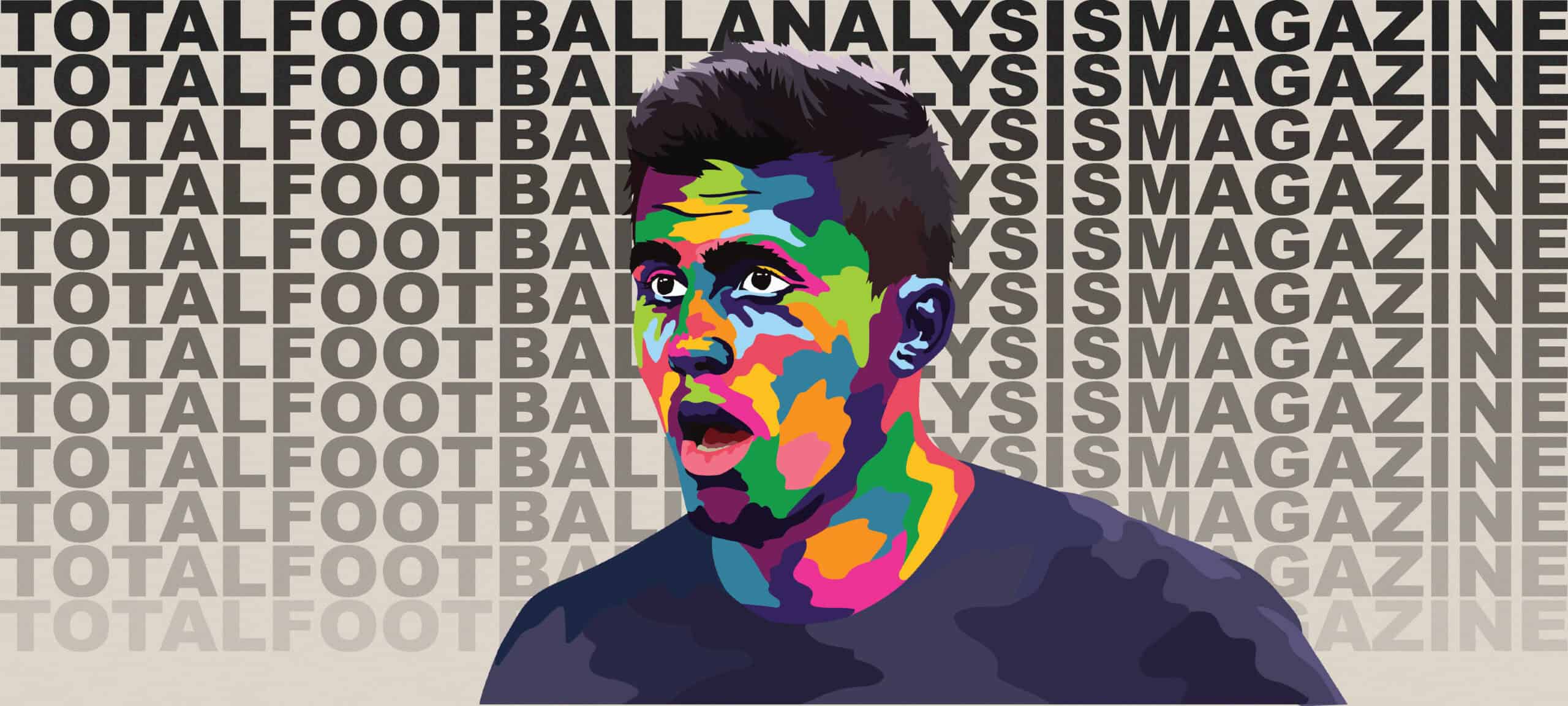



Comments